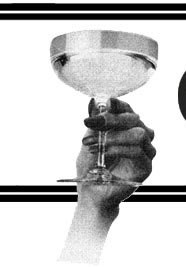 |
|
newsletter designer
Emerson University
Dan
Cook
editor
Rutgers University- Camden
George Ritzer
long-time, dedicated supporter
University of Maryland-College Park
Mike
Ryan
listserv manager
University of Maryland—College Park
Statement
of Purpose
The organizing
group for the Consumer Studies Research Network seeks to foster dialogue
and debate among those who are interested in and concerned about the
place of goods and commodities in social life. These interests and concerns
may range from the poetics of micro/personal identity formation to the
identity politics of gendered, raced and classed display, from historical
work on the rise of consumer culture to a critique of Nike advertising,
from investigations of typical places of consumption to the study the
dynamics of globalization and urban areas. Individuals affiliated with
the Consumer Studies Research Network desire to bring to the fore, in
their own ways, the depths to which commodities and a market logic have
come to pervade virtually all forms of social life and social interaction.
The primary goal is to begin to engage in an interchange.
Contact:
Dan Cook
Consumer Studies
Research Network
Rutgers University
405-7 Cooper Street
Camden, NJ 08102
phone: 856-225-2816
fax: 856-225-6435
dtcook@camden.rutgers.edu
Have something to say? Send in essays, comments, letters, reviews, observations
for the next Newsletter.
Visit our new website
![]()
Monika
Wood,
webmaster
by George Sanders
(sanders4@oakland.edu)
When the U.S. was primarily a producer economy the protestant work ethic
that Max Weber described served us well. Hard work, re-investment, saving
money, pinching pennies and so on all provided normative behavioral guidelines.
But now we live in a consumer society, and with the “ongoing commodification
of everything” as Wallerstein (1983, 1998) puts it, the citizenry
has been encouraged to spend, spend, spend—an ideology epitomized
in the advice given to us by our president shortly after Sept. 11th 2001
when we were told to not to allow terrorists attacks to impede our shopping
activities. Even in an era of limited credit and liquidity, this ideology
has become so entrenched that it is unlikely to be completely undermined
in the near term.
As a consequence of consumerism’s entrenchment in contemporary
society, I would argue that Weber’s “elective affinity” between
asceticism and the expansion of capital has given way to a new relationship.
The new affine making possible capitalism’s growth is novelty.
That is, in order to consume more and more we require an unceasing supply
of fresh stimuli (Bauman 2007). One area in which this is readily apparent
is in the kinds of experiential consumption (Caru and Cova 2007) now
available in our “cathedrals of consumption” (Ritzer [1999]
2005). We eat in themed restaurants; buy our wares at wondrous big box
retailers that woo us with their expansive aisles of merchandise stacked
twenty feet high; attend increasingly extravagant amusement parks; and
we glory at the marvel of online shopping which allows us to connect
to other shoppers, rate our experiences, and await the arrival of our
sundries straight to our doorstep. But it’s not merely applicable
to the arena of retail therapy.
In this essay I examine some of the means through which the American
funeral industry has contributed to experiential consumption via themed
goods. Steeped as it is in conservatism and over a century’s worth
of staid traditionalism, the notion that the funeral industry can contribute
to experiential consumption utilizing themed products and services might
surprise some.
More...
 |
||
Kidz
Bop, “Tweens,” and childhood music consumption
by Tyler Bickford
(tb2139@columbia.edu)
Columbia University
The last several years have seen the consolidation of a
new marketing category in the entertainment industry—“tweens,” a
group that before it was so prominently and successfully cultivated as
a market demographic would have been called “preteens.” The
top-selling album of 2006 was the soundtrack to the Disney Channel movie High
School Musical, a “tween”-driven phenomenon. The following
year, two more Disney Channel acts, Hannah Montana and the Jonas Brothers,
emerged as top acts in the industry.
Below the radar of Disney Channel’s
meteoric successes, the entertainment company Razor & Tie is the
workhorse in this market, regularly releasing albums of the prominent
brand Kidz Bop, which sells mainstream popular music partially digested
for children’s consumption. Kidz Bop markets CD compilations of
top-forty hits for preteens, rerecorded with groups of children singing
along to the choruses and hooks, occasionally interjecting “yeah!” and “woooh!” In
addition to being the top selling children’s artist in the four
years through 2006 (recently overtaken by Disney acts), Kidz Bop represents
vibrant growth in a music industry troubled by diminished profits. The
tenth volume of Kidz Bop debuted in August of 2006 at #3 in the all-around
Billboard album sales charts, and Kidz Bop volume 9 entered the charts
in February 2006 as the second best-selling album in the country.
In this paper I look back a couple years to examine a recording from volume 8, which in August 2005 became the first Kidz Bop album to crack the Billboard Top 10, following on the heals of Kidz Bop 7, which itself broke sales records for children’s music and was certified gold.
More...